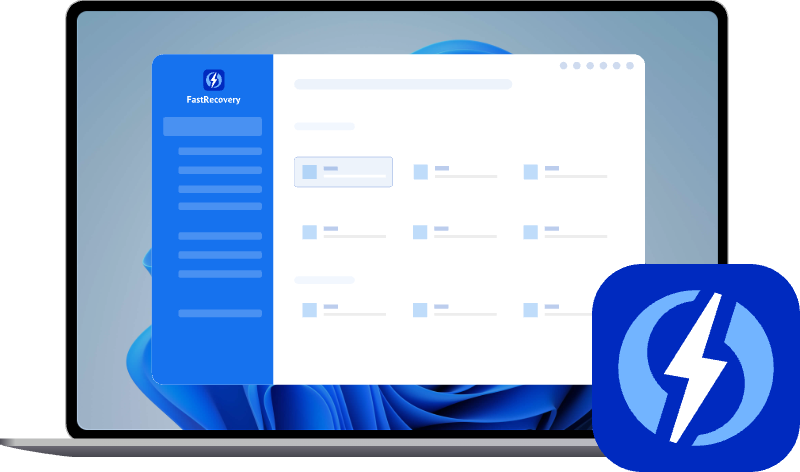How to Recover Data after Reinstalling Windows 10 (2 Ways)
This article describes 2 effective methods and how to recover data after reinstalling Windows 10 step by step. But Sometimes you don't need to reinstall Windows 10.
How can I recover my data after installing Windows 10?
“I recently ran into a problem with Windows 10 update that resulted in reinstalling Win 10. My drive C was completely wiped clean, and I need to reinstall all of my programs. But my D drive (a separate physical drive) was not affected. Luckily, it saves my most data.
My question is: Is it safe to restore the backup to the C drive because the message says the selected hard disk is not empty? If I continue, all the data the disk contains will be deleted. So how to recover data from reinstalling Windows 10?”
Yeah, in the field of computers, when there is a problem with the Windows operating system, users sometimes need to reinstall Windows OS to restore it to a good status, but they don't want to lose their data. Here are 3 different situations and recovery methods:
- #1: Still don't reinstall Windows. Microsoft offers you the "Keep my files" option while resetting, which, as the name suggests, allows you to reinstall Windows 10 without losing data. Also, it's necessary to backup files (if possible).
- #2: Reinstalled Windows and lost data. Microsoft still allows users to recover data from Windows.old folder created after reinstalling Windows. Note Windows will automatically delete it after 28 days.
- #3: 28 days after Reinstall Windows. You need to check if there are any backups available or try reliable data recovery software. This is what we are going to focus on.
Recover files after reinstalling Windows 10
As mentioned previously, you can easily recover data from Windows.old folder after reinstalling within 28 days. Please check if there is a Windows.old folder. If not, go ahead and learn 3 different methods to recover deleted or lost files from Windows 10.
Option 1. Recover files with File History
File History, first introduced in Windows 8, and later inherited in Windows 10, allows you to save data in an external drive or network drive that is not affected by Windows reinstallation.
- It can backup copies of files in the Documents, Music, Pictures, Videos, Desktop folders, and those available offline OneDrive files on your PC.
- The Windows 10 version has a new feature - "Add a folder" that allows you to backup specific files or folders outside these folders and there's no need to add files to those folders.
- In addition, you can set the time you want to save copies of your files and the period to keep saved versions in Advanced Settings.
Given that you’ve saved data in an external drive, you can copy these files from to your PC after Windows reinstallation. Or try to connect your external hard drive and restore files from File History.
Step 1. Start Control Panel > System and Security > File History.
Step 2. Click Restore personal files.
Step 3. Select the deleted files you need and click the Recover button. Click the arrow icon to see earlier versions. For example, you could navigate to the desktop folder and recover a deleted folder from the desktop.
Option 2. Recover files with AOMEI FastRecovery
If there is no available backup, you still can try AOMEI FastRecovery. Supported by advanced technology, this powerful and user-friendly data recovery software can handle broader data loss scenarios such as accidental deletion, disk formatting, system crash, or more. To some degree, it enables you to recover data from lost partition after reinstalling Windows.

- Apply to: Recover deleted or lost files, such as documents, photos, videos, compressed files, etc., in more than 1000+ formats after reinstalling Windows 10.
- Combine Quick Scan and Deep Scan technologies to scan lost partition and detect all deleted files and other lost files.
- Search or filter data quickly through file name, extension, data type, etc.
- Preview and recover files while scanning.
- Recover specific files or folders instead of all.
- Recover data from hard disk without OS.
- Support NTFS, FAT32, exFAT, and ReFS in Windows 11/10/8/7 and Windows Server.
- .....
Now, click the download button below to get started.
Step 1. Launch AOMEI FastRecovery on your PC. Hover the mouse over the drive saved deleted files before, and click Scan to scan.
Step 2. You’ll see all the deleted files and other lost files after performing Quick Scan and Deep Scan. AOMEI FastRecovery will categorize and save them in the Deleted Files, Recycle Bin, and Other Missing Files folder. Just expand these folders and find your files in their original location.
Step 3. You can also search or filter data to quickly find and preview them. Confirm the scanning results and select the files you want to restore, click Recover x files, and select a new location to save them.
- Type: Select the data type (Documents, Images, Videos, Audio, Mails, Webpages, Compressed files, etc.)
- Date modified: Set the date (today, yesterday, last 7/30 days, etc.)
- Size: Filter the file size (<128KB, 128KB~1MB, 1MB~ 512MB, 512MB above, etc.)
- Name/Extension: Type the file name or its extension to narrow the filter.
It is not limited to recovering files after reinstalling Windows 10, but also SD cards, USB drives, external disks, HDDs or SSDs, etc., in the following scenarios:
- Recover data from formatted SSD drive
- Recover files deleted by virus
- Recover deleted files from Recycle Bin
- Recover permanently deleted files
- Recover data from dead hard drive
- ......
Sometimes you don't need to reinstall Windows 10
The System Restore Point is a snapshot of the system configuration and Windows Registry settings that can be used to restore the Windows operating system to a previous date when it was running smoothly. In other words, if the problem is related to system files, installed apps, system settings, etc., you don't need to reinstall Windows 10.
If you’ve turned on system protection for the local disk, you can restore the computer to an early date to restore the health instead of reinstalling Windows.
Step 1. Press Windows and type Create a restore point. Then, click Open.
Step 2. In the System Properties window, click System Restore. Then, click Next.
Step 3. Select a system restore point from the list, and click Scan for affected programs to confirm what applications will be affected. Then, close it.
Step 4. After confirming your restore point, click Finish> Next.
Step 5. Click Yes to start the restoration process. After that, your PC will be rebooted and you can close the last window to exit it.
Backup files just in case if you still don't reinstall Windows
It is easy to know that data loss is common and for different reasons in the information age. Our computers carry many personal files and working documents. If you are experiencing a situation in need of reinstalling Windows, it's suggested to backup files to external hard drive or other devices (if possible). Thus, you need reliable backup software.
If you’re not familiar with these Windows features, you could utilize a handy third-party tool like AOMEI Backupper Standard. It offers users “System Backup,” “Disk Backup,” “Partition Backup,” or “File Backup” features, so you can backup any items you want.
For instance, if you want to backup some important files, select the “File Backup” option. It even allows you to schedule backup system daily, weekly, or monthly, and backup only changed or new files by default, greatly saving backup space and time. You can also backup the entire Windows 10.
Wrapping up
Windows reinstallation could put you on the verge of data loss. At the moment, how to recover data after reinstalling Windows 10? This comprehensive guide lists 2 effective ways for you as well as other important suggestions. AOMEI FastRecovery is worth trying data recovery software if you don't have any backup.
Meanwhile, the handiest and most efficient way for data loss prevention is to seek help from free backup software - AOMEI Backupper Standard. It is much more flexible and easy to use than Windows features.

